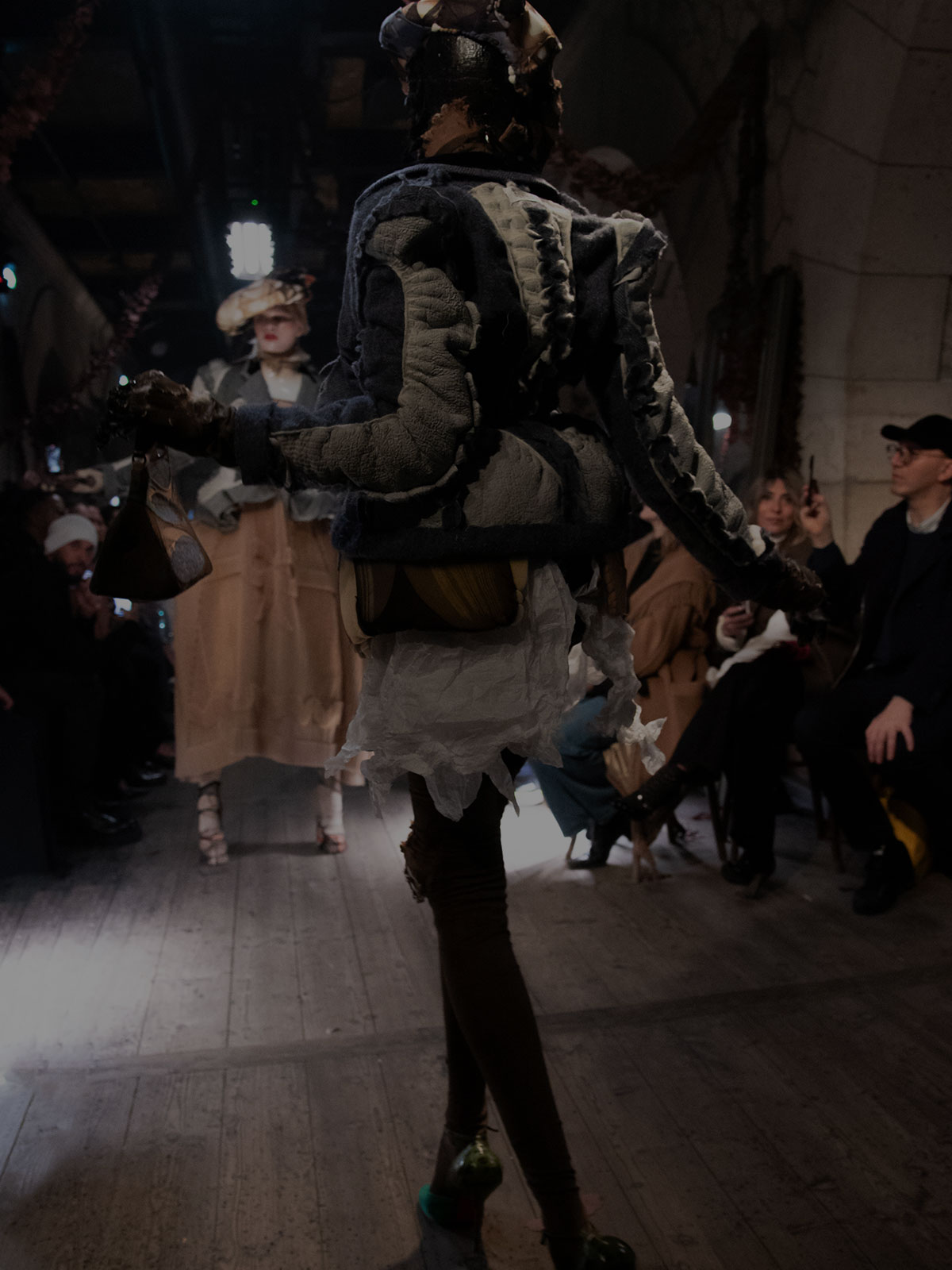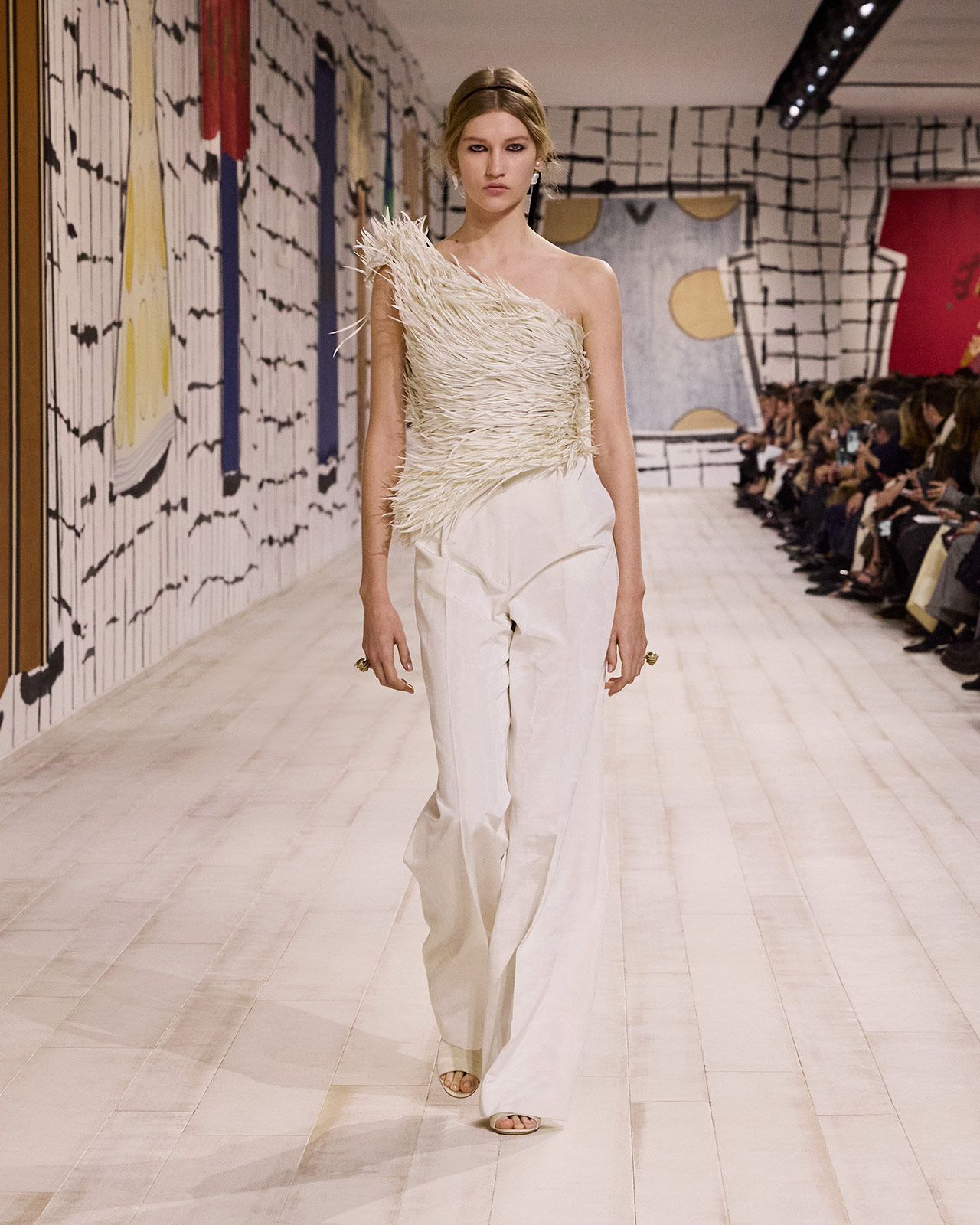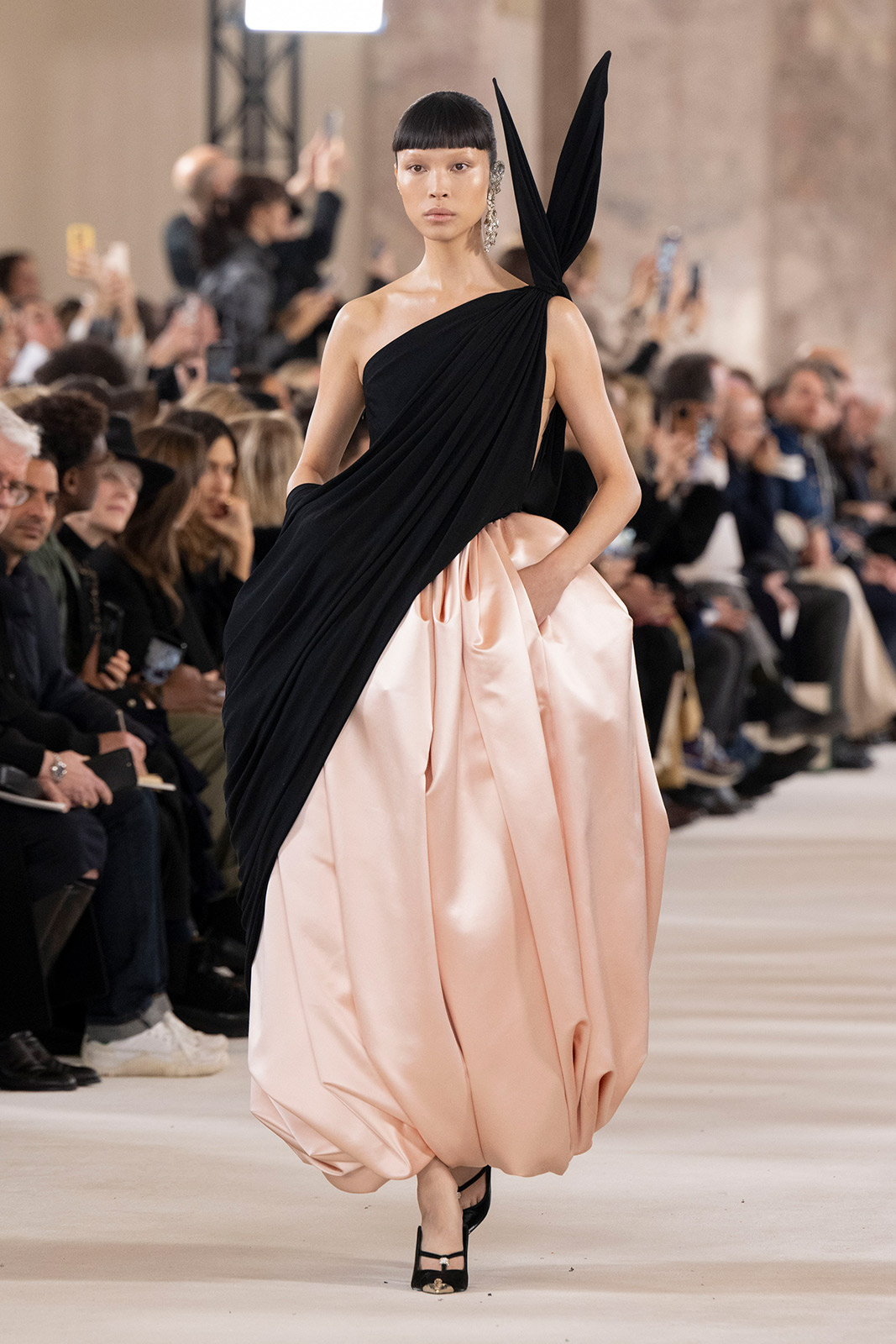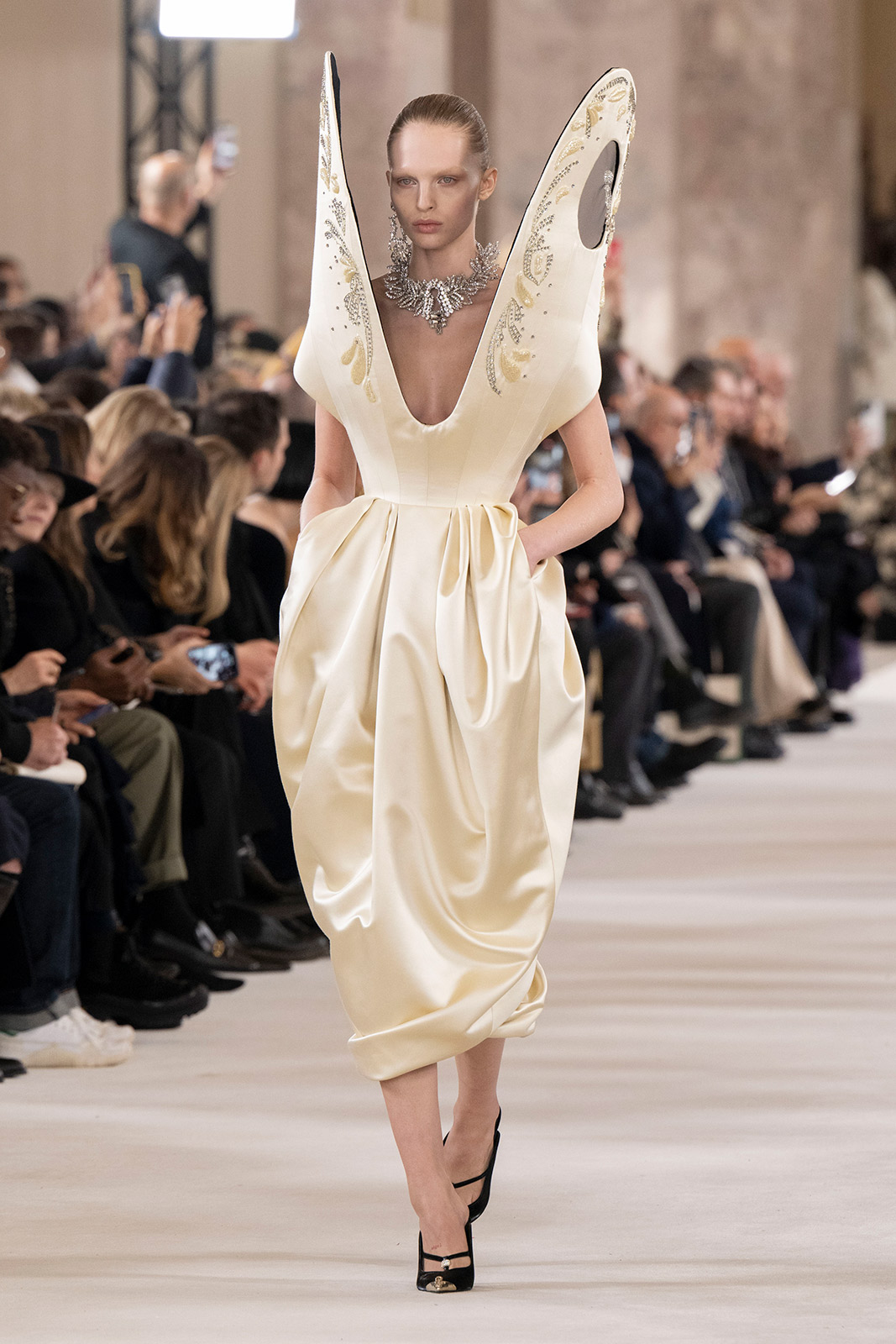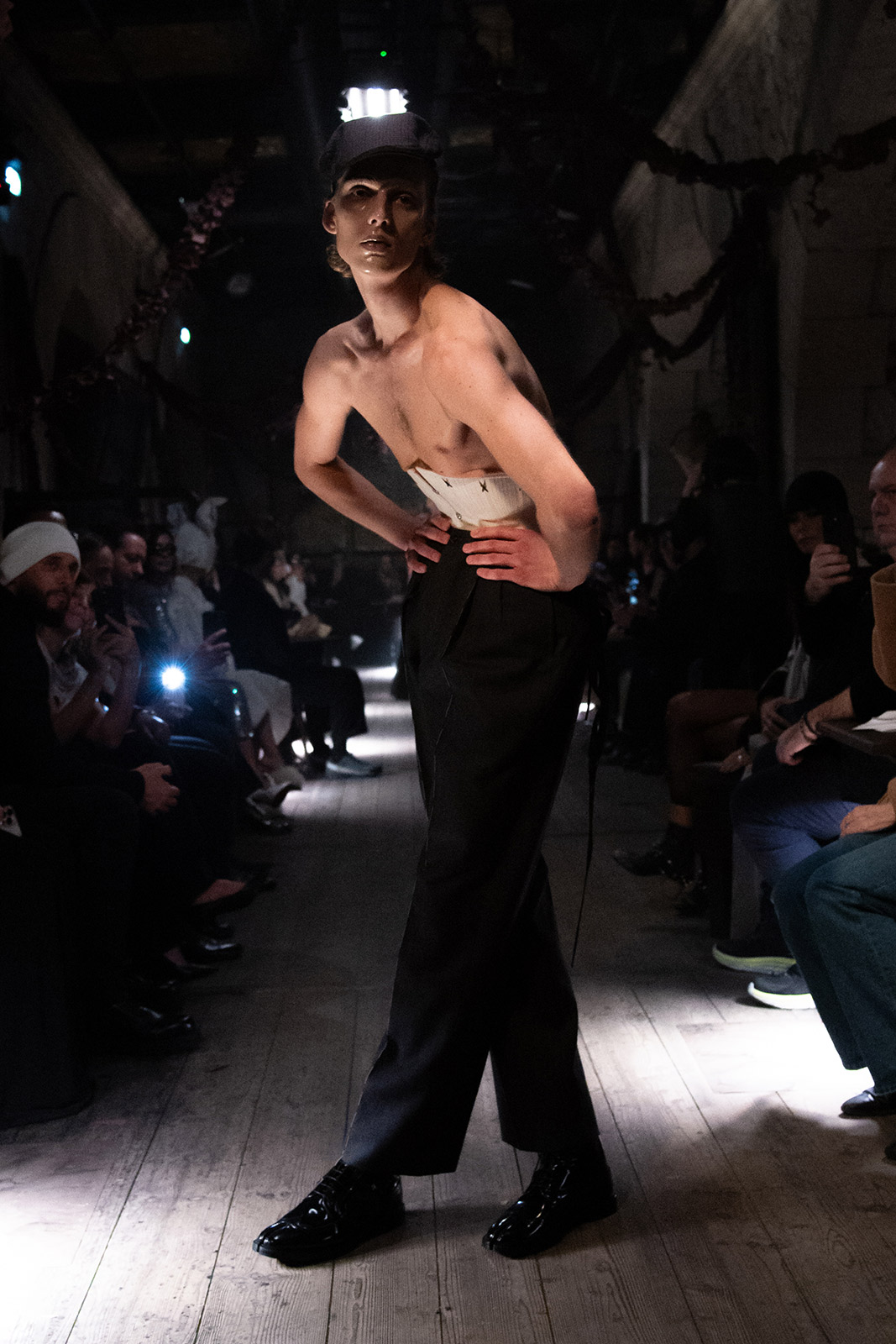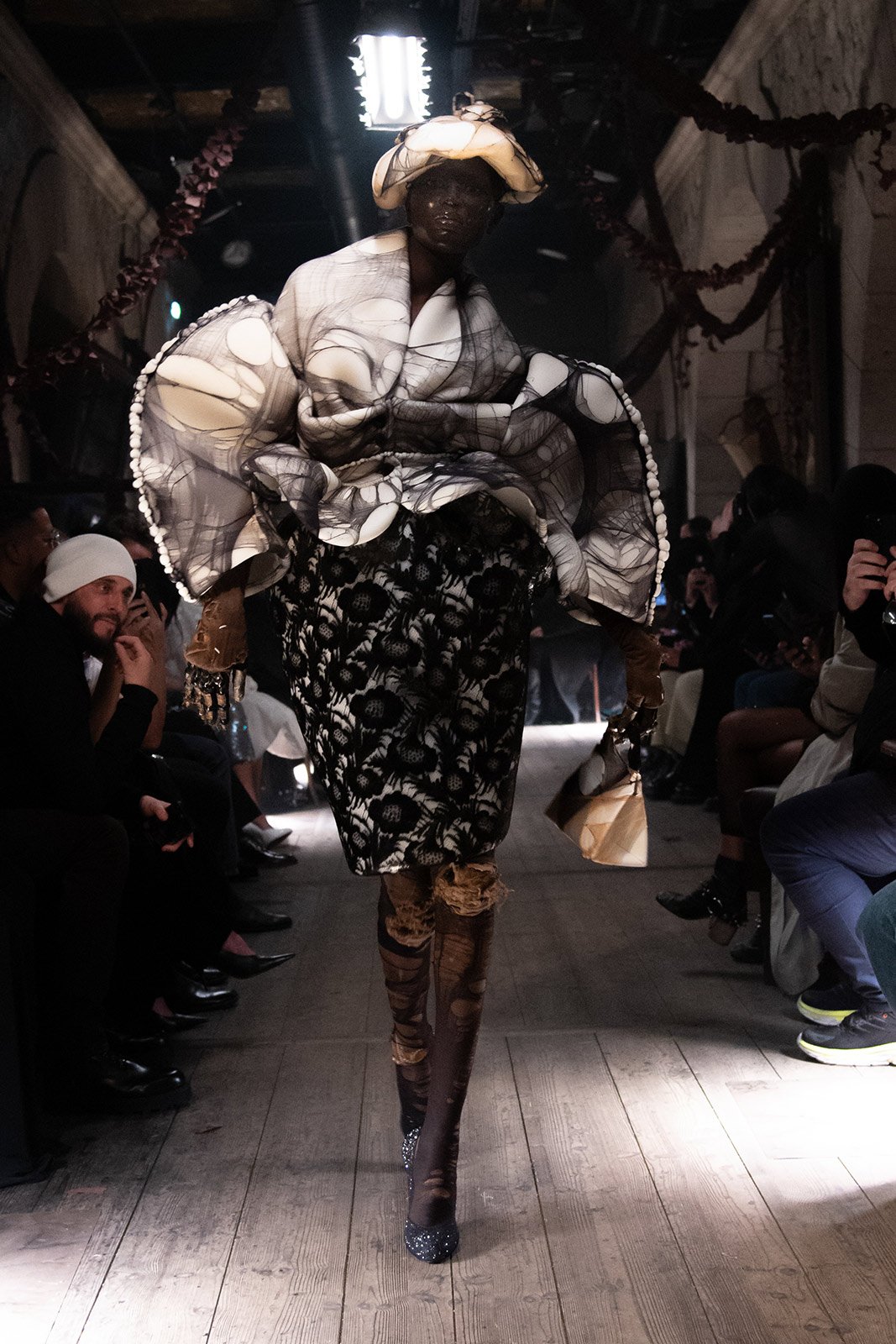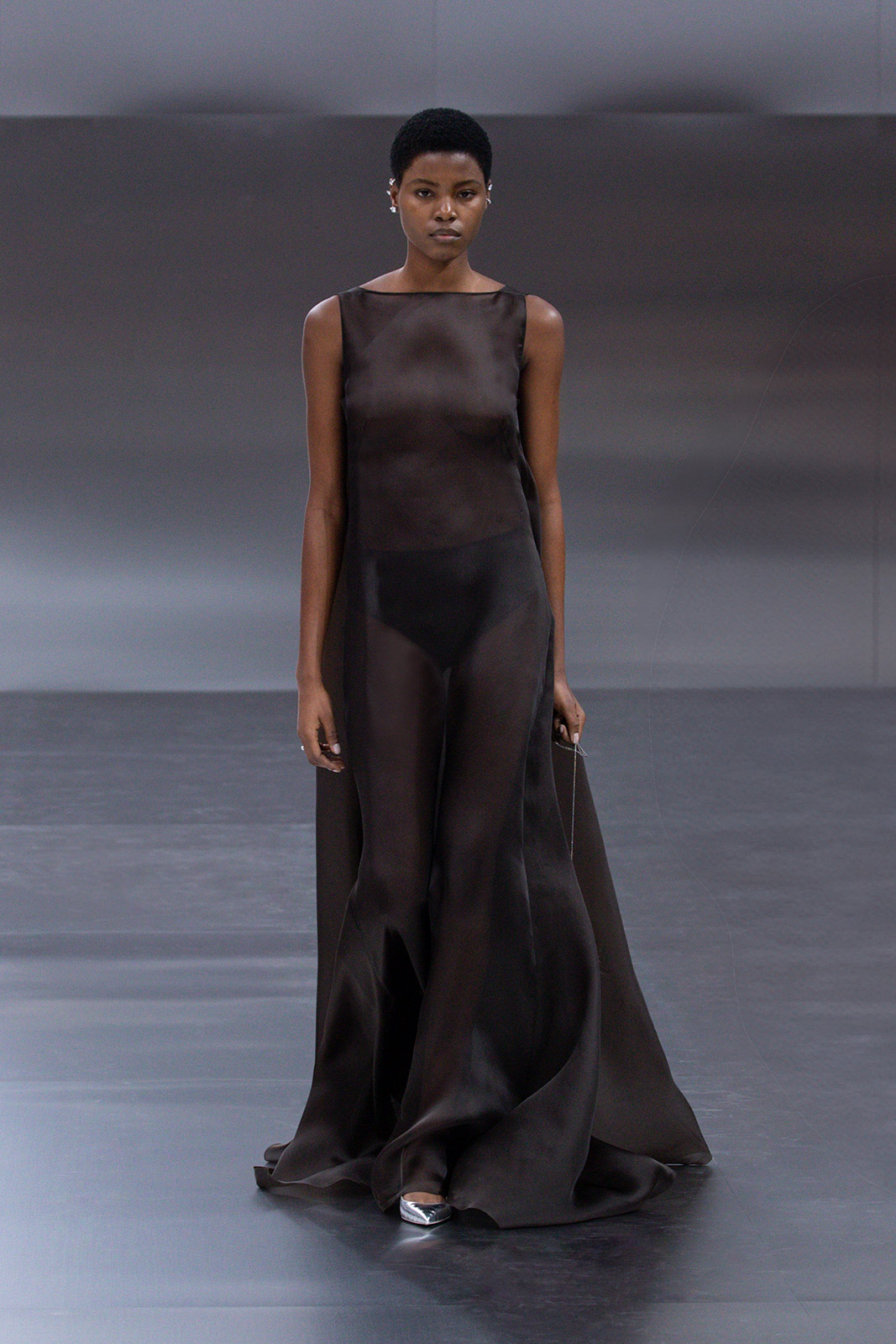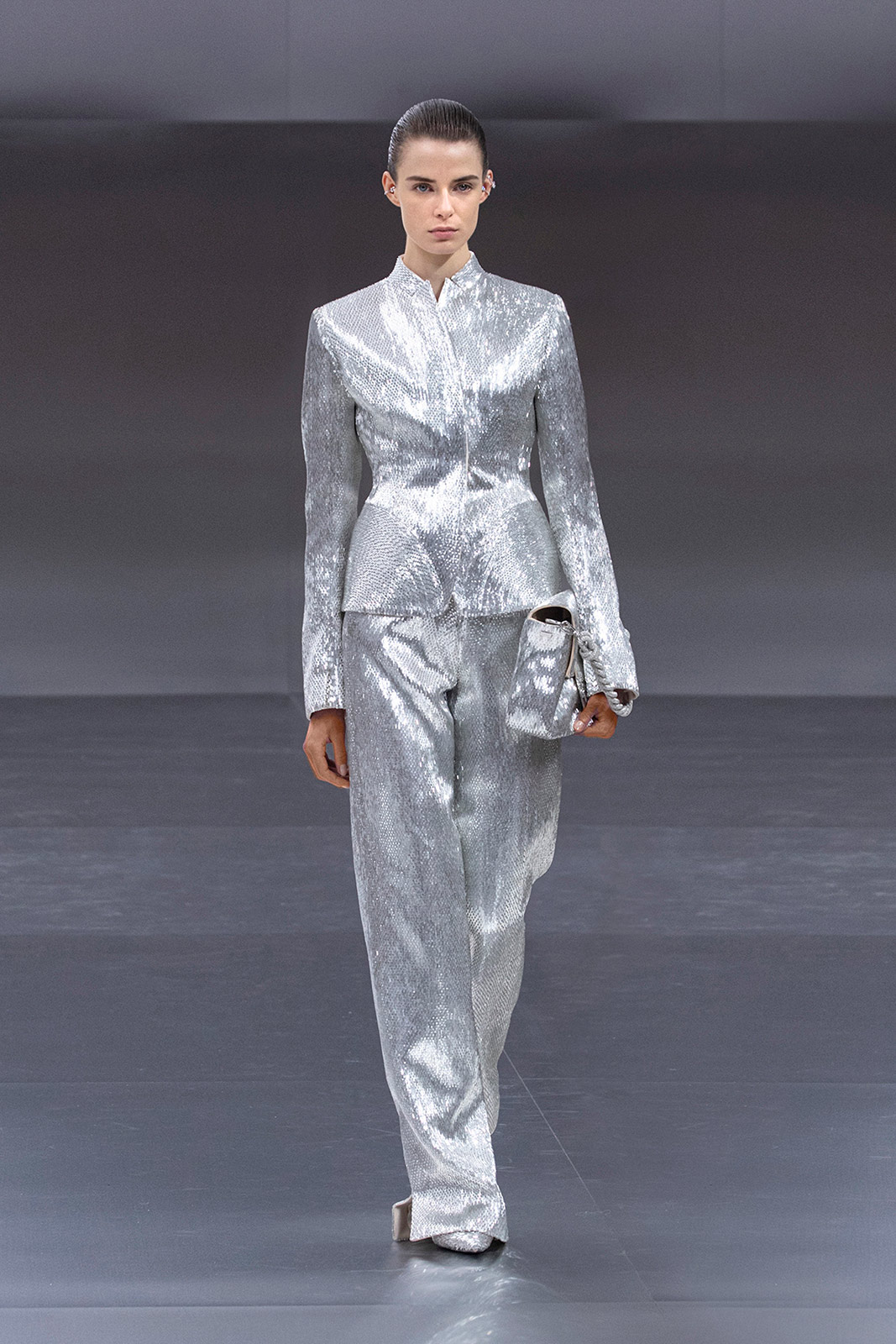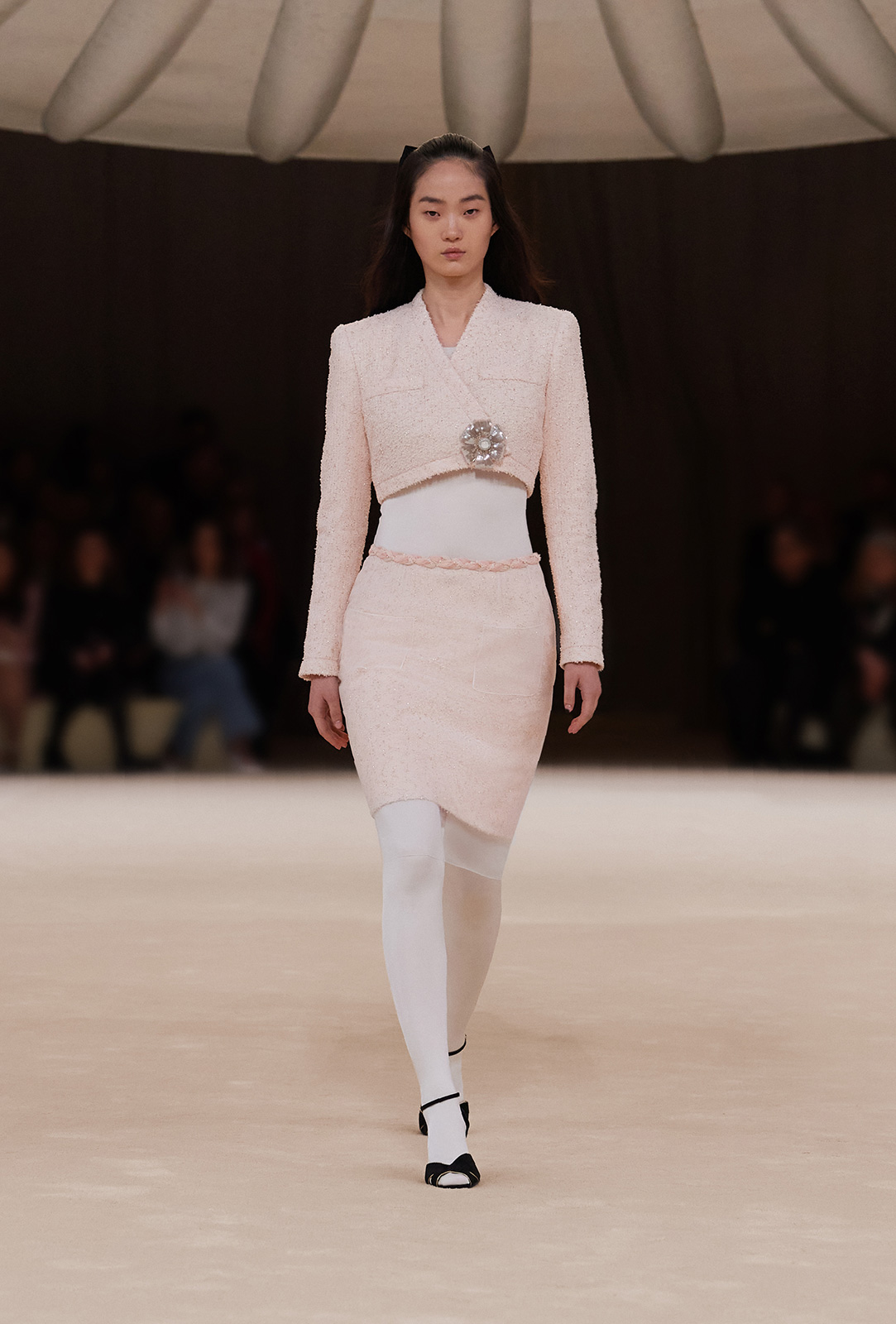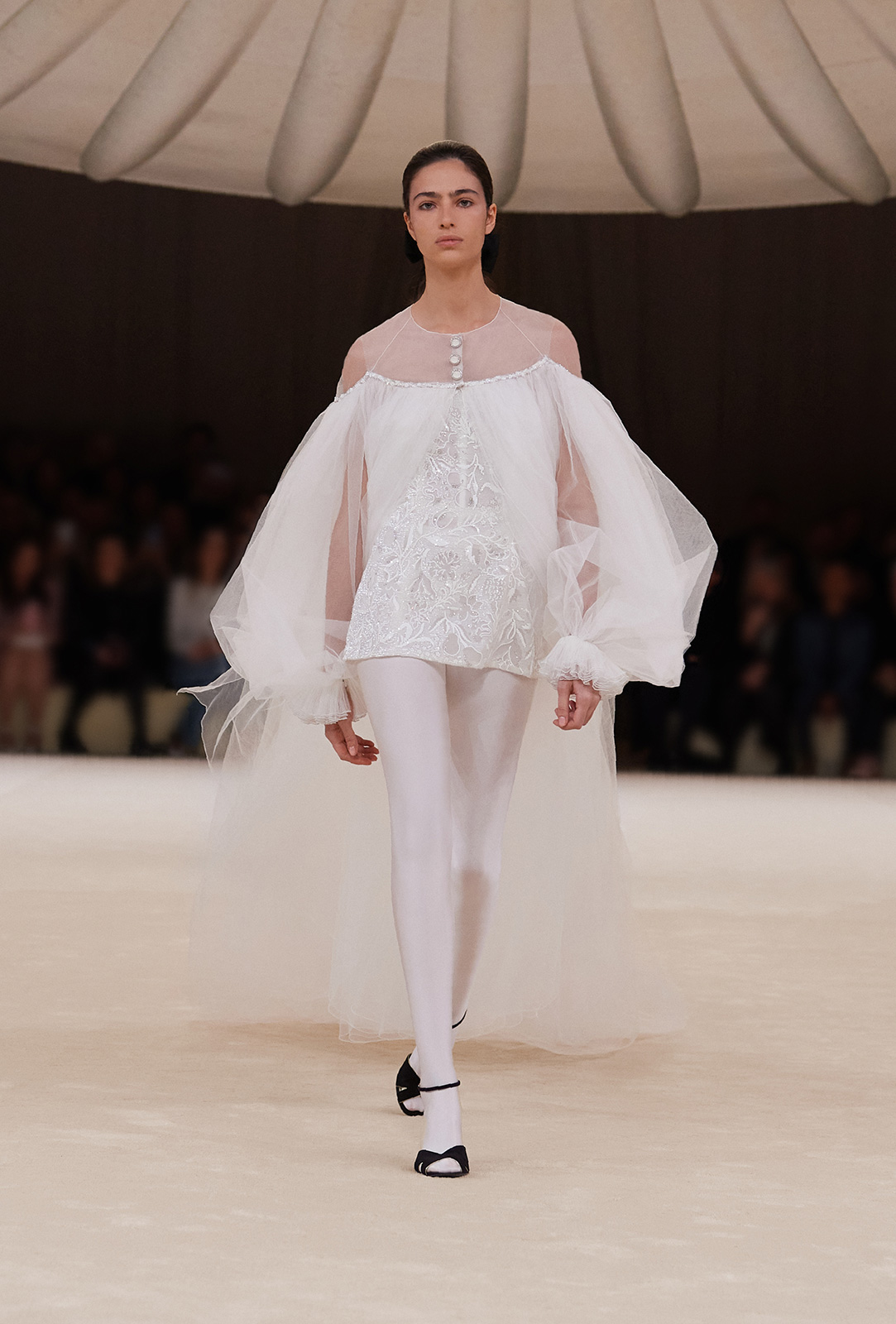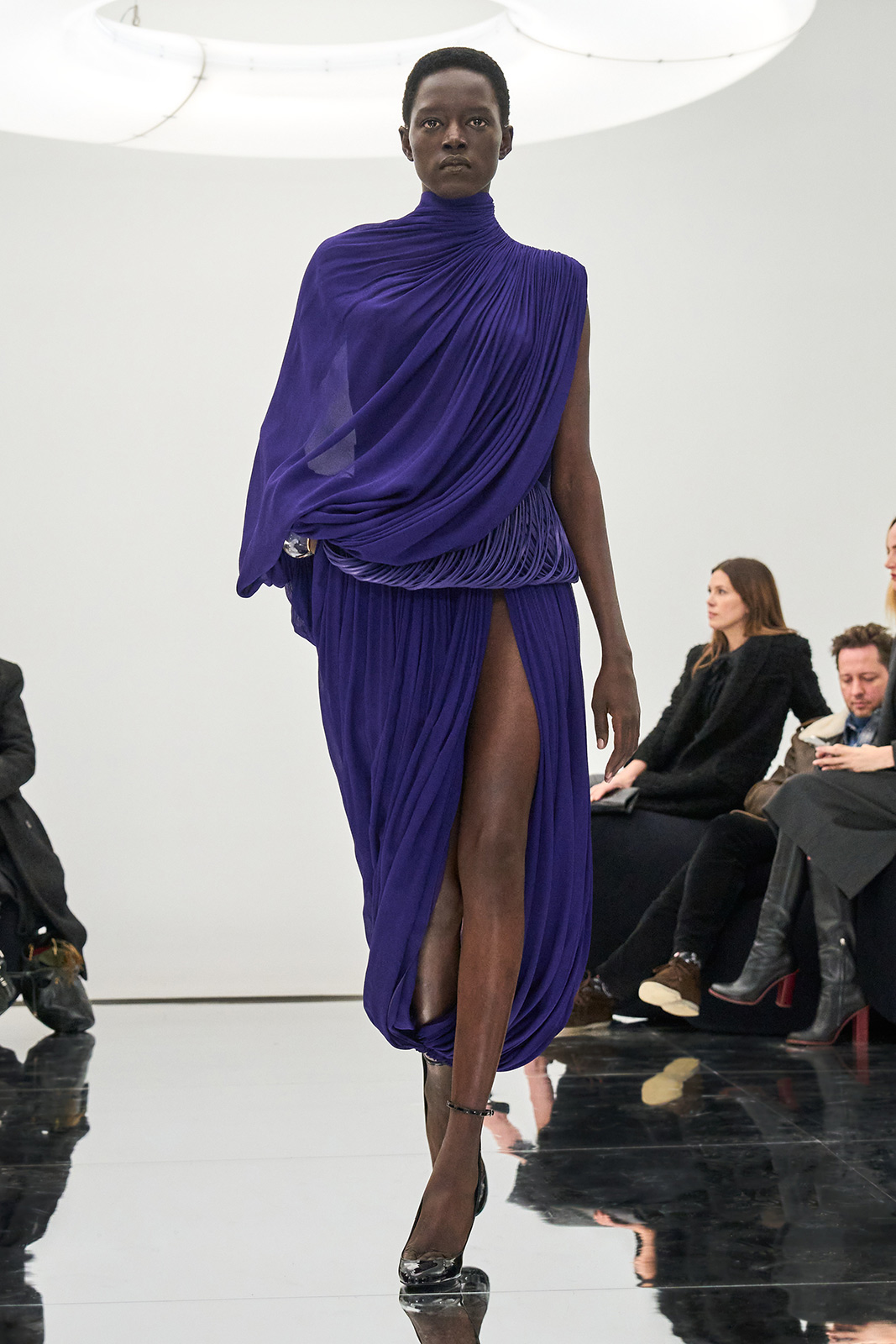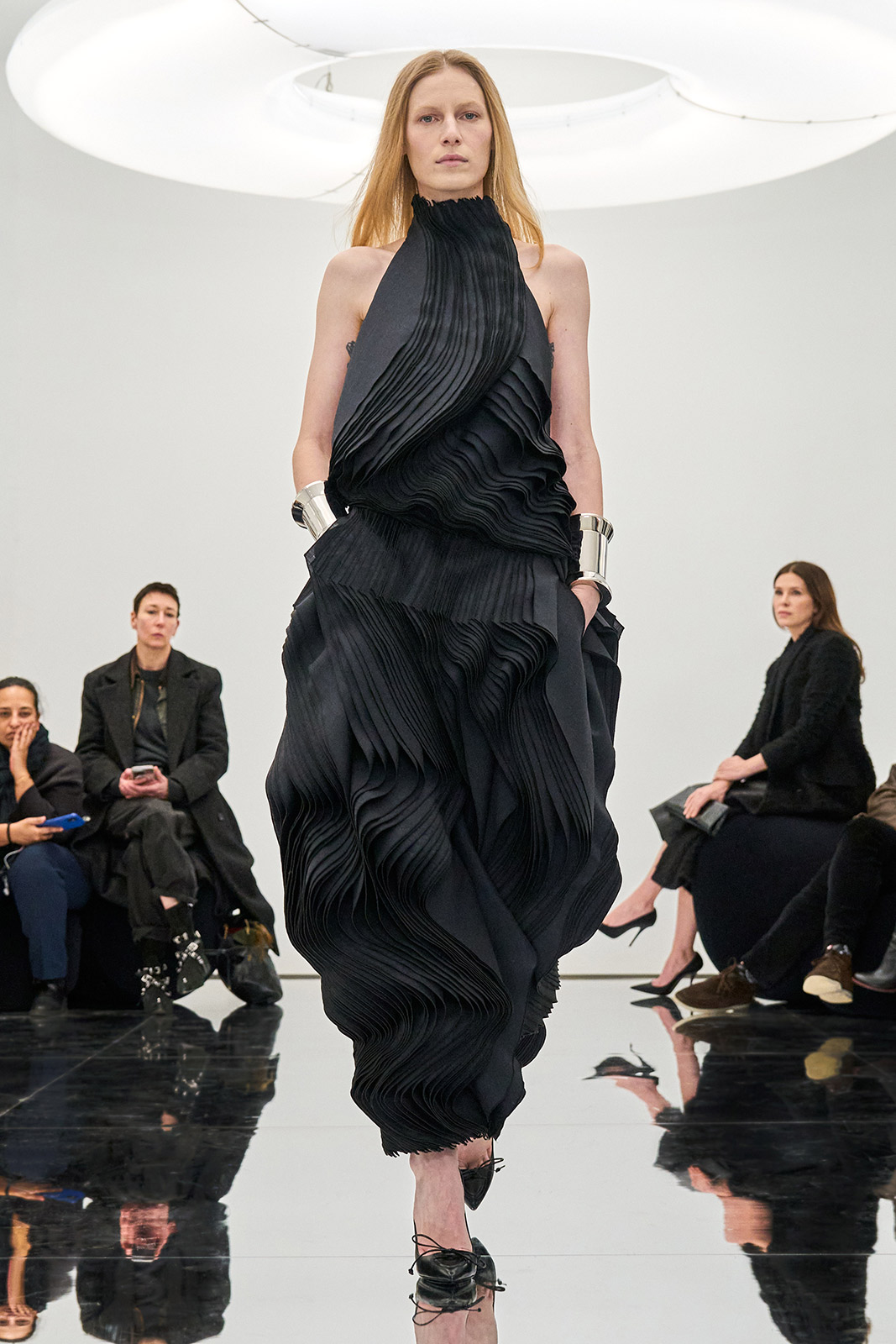Document Journal rounds up the standout couture collections from a week in Paris
There are two warring interpretations of fashion: fashion as art, and fashion as commerce. Historically, fashion is a pre-modern art form used in royal courts to distinguish status; now, it is a contemporary industry that sells status symbols to any who have the means to buy. Haute couture is a secret third thing: a Parisian practice born out of the artisanal skill needed to create, say, a gown for a 17th-century English princess to sit for an oil portrait. Transcending the categories of art and commerce, couture is craft. It is something beyond money, to which only today’s royalty have access—this is what makes couture week in January a favorite among the global fashion world.
Where there is history, there is an opportunity to explore the specter of garment’s past through modern silhouettes—as is the case in this season’s bespoke offerings. Document Journal shares its roundup of the most inspired couture collections in this dispatch from Paris.
Dior
“Tracing aura”—this is how creative director Maria Grazia Chiuri chooses to create the lines for Dior’s latest haute couture collection. This concept of aura comes from the work of German philosopher and cultural critic Walter Benjamin, who defined the term as “the staying power of an artwork’s authenticity over time,” as Chiuri quotes in the press release. Grounded in the La Cigale dress from the house’s Fall/Winter 1952 season, Chiuri’s latest presentation is equal parts luxurious and muted, using Monsieur Dior’s favorite moiré fabric alongside her familiar cotton, silk, and tweed varieties. “Between art and life,” as the show notes read, the beginning looks all take on different structural aspects of the La Cigale: the geometric angles of the original dress are widened on trench-coat-beige-colored voluminous skirts and overlapped to create modern, stair-like details on dress collars. Rich green, gold, white, gray, and burgundy moiré pinafores are tailored just so in uniquely classic yet modern silhouettes for today’s Dior woman. Who is she? The type of lady to wear a blue double organza dress fully embroidered with metallic depictions of tiny woodland creatures in various states of play while sporting smoky black kohl eyeliner. Her affect is emblematic of Dior’s couture legacy in a grander scheme—adventurous, and with everlasting relevance.
Schiaparelli
Did you know that Elsa Schiaparalli’s uncle Giovanni coined the term “martian”? Creative director Daniel Roseberry did, using the Schiaparelli family’s historied obsession with the extraterrestrial as the conceptual backing of the house’s latest couture collection Schiaparalien. The title says it all, and in a pun, no less; Roseberry nods to Elsa’s fascination with the astronomical and the alien by honoring what the show notes call her committed relationship with “unlikely marriages.” Design-wise, this legacy is best exemplified by her 1938 silk Skeleton dress designed in collaboration with surrealist Salvador Dali: a perfectly tailored classic fabric, adorned with an eccentrically bespoke technique, like the trapunto-quilted human rib cage she added to an otherwise simple gown. Roseberry honors this quality from late Elsa with his own odd-ball embellishments on perfectly sculpted minimal silhouettes: a motherboard-and-strasse microchip dress with a 2007 Samsung cellphone on the left shoulder, or an embroidered white lace knee-length dress with a bust shaped into a Xenomorphic chest plate that veils the model’s face. The native aesthetic language of the Texan-born creative director makes its way into the collection via keyholes, buckled corsets with corresponding boleros and cowboy boots, and curvy off-kilter heels. Schiaparalien presents a runway both of this world, and just beyond it; that, says Roseberry, is “totally Schiaparelli.”
Maison Margiela
John Galliano possesses a perspective on design so radical that it borders on sardonic: if the Paris fashion circuit were a French Passion Play, he’d be the impeccably dressed harlequin, cartwheeling in full corsetry to everyone’s grim delight. As creative director of Maison Margiela, Galliano has reanimated a vision the industry hasn’t seen in years (I’d say since his Victim collection for Dior in 2003)—a full-stack theatrical production featuring garments as highly emotional as they are remarkably constructed. This season’s Artisanal Collection, based on the ritual act of getting dressed as an expression of character, features body-modifying waist cinchers and full hip-pad underpinnings to create exaggerated Victorian shapes. Here, technique is everything: featherlight jackets, coats, and trousers are made using milletrage, “a mirage created from a filtrage composed of a mille-feuille of organza and felt under a cool crêpe printed with a trompe l’oeil of the texture of a classic gentleman’s cloth,” as articulated in the collection notes. Each look is finished with “emotional cutting,” a process that imbues the clothing with unconscious gestures that identify Galliano’s characters: floating maidens avoid the rain with cabans, and trouser hems appear oily, as though their wearers have just sloshed through mud puddles. Figurative impressions emerge in the doll-like accents of striped dresses worn with goggle turbans resembling 14th-century plague masks, as well as the six unique haute couture stiletto variants designed in collaboration with Christian Louboutin, red soles and all. Under Pont Alexandre III, Galliano takes us on a walk through Paris’s seedy underbelly, bones and all.
Fendi
Creative director Kim Jones returns to Fendi haute couture with a new affective slant—”human futurism,” as he puts it. “The FENDI approach to the person wearing couture is to reaffirm their humanity; they are always ‘someone’ rather than ‘something,’” reads the press release. A series of syllogisms appear on the runway as a result of this season’s design direction, the most notable being the Scatola—or box in Italian—silhouette, a precision-based pattern-cutting technique that creates structure and volume from the weightlessness of lighter fabrics like silk gazar, and the elevated ribbed knit dressed that featured Shibari-style harnesses to keep their shapes. From a textile perspective, unique furs and sequins are used as ultra-luxe accents to reiterate perhaps the core tenet of couture: its one-of-a-kind nature. As usual, the array of accessories was as thought-out as the garments, a signature of Jones’s during both his tenures at Fendi and Dior Homme. The iconic Baguette bags are retrofitted as perfect accompaniments to eveningwear, seen dripping in feather-like fringe and gems. A spectacular new eyewear piece called Singular Vision makes an equally sparkly impact, a minimal-looking 18k white gold and pave diamond frame designed by artistic director of jewelry Delfina Delettrez Fendi using individualized facial scans. In a flash, Jones gives couture practices their moment in the sun with this Fendi collection, where “structure becomes decoration and decoration, structure.”
Chanel
If there’s one show to look forward to every season, it’s Chanel: from Lagerfeld’s legacy of building opulent grocery stores and airports just for the catwalk comes Virginie Viard’s more intellectual take on the same DNA. This season, the creative director presents The Button, a collection opened by fresh-faced actress Margaret Qualley, alongside a short film of the same name. The runway takes place in a simply elegant white carpeted room with a giant installation of a Chanel button, drawing focus to the veritable feast of pastel tulle, tights, and of course, tweed. Models become distinctly “Chanel” versions of off-duty dancers, dressed in fondant-colored skirt suits layered over catsuits, embroidered organza outerwear layered over perky ballerina tutus, and gorgeously puffed-out jumpsuits in the style of Pierrot clown costumes. Written and directed by Dave Free and scored by Kendrick Lamar, the film features an intrepid Qualley following the trail of a button missing from the cuff of her Chanel jacket all the way to Paris, where a head seamstress (played by Anna Mouglalis) re-attaches the missing closure. All these moving parts—the collection, the button installation, and the film—are emblematic of the women’s empowerment narrative that has always been at the heart of Chanel. “Thanks to [them], women could rid themselves of everything that had prevented them from moving freely,” says Viard in press release. “Gabrielle Chanel treated buttons with the utmost respect. Like a jewel, it adds a touch of daring and sparkle to the unique allure of which she was both theorist and artisan.”
Alaïa
As in recent seasons, Pieter Mulier’s Summer-Fall Alaïa (although a ready-to-wear collection) found its influence in the couture traditions of Azzedine Alaïa. Grounded in the idea of less is more, Mulier’s collection goes far beyond the idiomatic—combining the simple geometry of a circle with a unique fabrication of a merino wool yarn to create each piece. Roundness is tantamount to the silhouette, inspired by “the curves of women, the circles of friends, of chosen family,” as state the show notes. Sometimes ebullient like the ample wool hem and corresponding cuffs of a black mock neck mini dress, and other times flouncy like the looped fringe technique done on leggy skirts and swooping halter tops, the theme rings true in classic Alaïa fashion: simple on the surface, with a host of awe-inspiring details.


